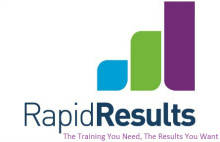The first basic rule for coaching is to realise that each person is different and that they will require some individual attention and approach in regards to feedback and coaching. Some people will be very sensitive and embarrassed to be given constructive feedback and may need some confidence-boosting first while others will want to dispense with any pleasantries and get straight into areas of improvement. You can’t treat these two extremes the same.
There isn’t just one model of feedback and one way of coaching that works but there are plenty that don’t.
Tools to understand your people
 In order to know how to approach each person, you need to know a bit about them. What type of learning style do they have? What is their personality type? What do they like to do in their spare time? Who do they hang around with at work? What are some of the strengths you have noticed about them? What makes them smile? Why do they work where they do? These are just a few of the questions that knowing the answer to will help you in your role as a coach.
In order to know how to approach each person, you need to know a bit about them. What type of learning style do they have? What is their personality type? What do they like to do in their spare time? Who do they hang around with at work? What are some of the strengths you have noticed about them? What makes them smile? Why do they work where they do? These are just a few of the questions that knowing the answer to will help you in your role as a coach.
If you know their best learning style (audio, visual or kinaesthetic), you will know how best to approach your coaching with them. For audio preferences you can ensure that you engage in good discussion, play back a recorded call to them if possible, get them to listen to a good and bad example of a conversation etc. For visual learners, write things down, show them graphs, trends or diagrams and keep plenty of colour going.
Show them things on the computer screen and describe things by way of the ‘big picture’ – how does what they do impact on the rest of the organisation or the customer. For kinaesthetic preferences, ensure that they are involved doing something. Don’t just show them – let them do it. Practice doing role plays and have them offer suggestions. These people learn best by doing.
Preferences
So how do you know which preference your people have? You can run a simple AVK test (there are loads of free ones on  the internet). You can listen to the way they talk – do they use audio language (I hear what you’re saying, that sounds great etc) or visual language (I see what you mean, I can’t see where this is going, I can picture that etc) or Kinaesthetic language (I feel for you, it just doesn’t feel right etc). Or you can just simply ask them what they prefer – it can be that simple!
the internet). You can listen to the way they talk – do they use audio language (I hear what you’re saying, that sounds great etc) or visual language (I see what you mean, I can’t see where this is going, I can picture that etc) or Kinaesthetic language (I feel for you, it just doesn’t feel right etc). Or you can just simply ask them what they prefer – it can be that simple!
Personality styles can also provide you with clues as to how people like to be coached and receive feedback. Some people like recognition – so you can get them to accept challenges with a promise of such. Some people want to avoid conflict, so approach the situation by putting them at ease etc.
The Platinum Rule
In short, you need to come off the ‘auto pilot’ and be in a conscious state when coaching. You can’t assume that everyone is happy with your standard default approach and remember that each individual is just that – an individual who needs their kind of attention. The golden rule states that you should treat people as you wish to be treated. Well that’s not going to work in coaching and feedback sessions. You need to live the Platinum Rule which is to treat people as they wish to be treated.
For more great tips on coaching and feedback, check out the book, ‘Coaching and Feedback made easy’ on Amazon 
You can also check out this 1 minute video clip:

Recent Comments